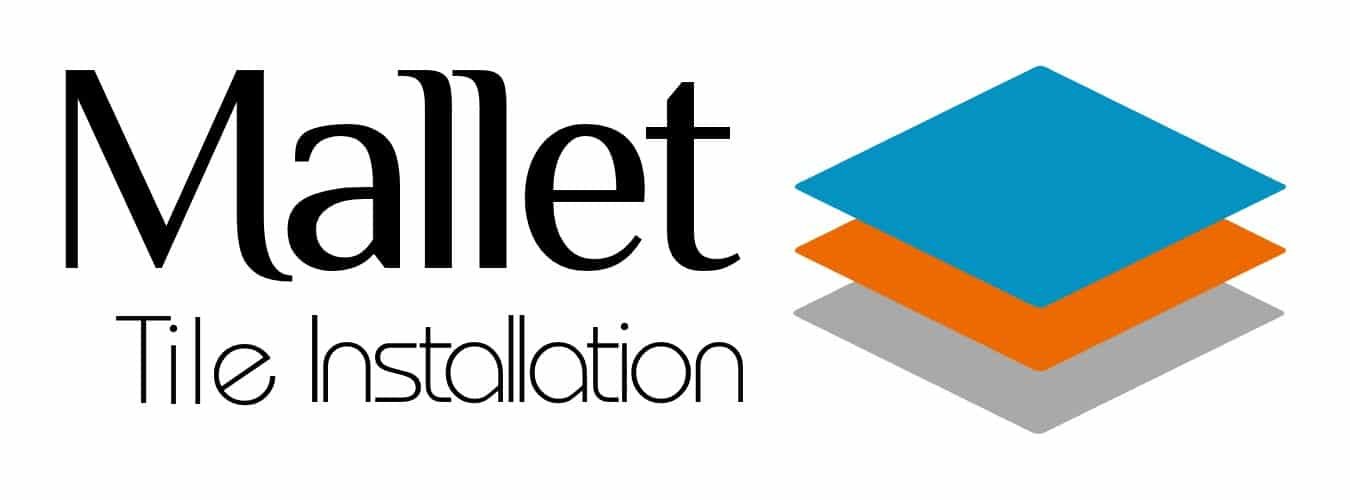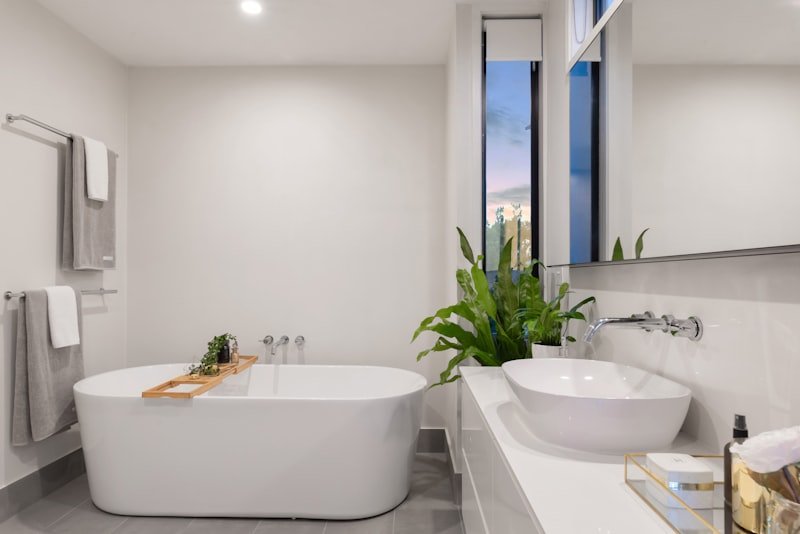Last updated: August 2025
You wake up one morning, and there it is—a hairline crack running through your beautiful bathroom tile. Maybe it’s in the shower, or perhaps on the floor near the vanity. Either way, that sinking feeling in your stomach is completely justified. Bathroom tiles cracking in Toronto-area homes aren’t just cosmetic issues—they’re often warning signs of serious underlying problems that can lead to water damage, mold growth, and expensive repairs.
The Real Cost of Bathroom Tiles Cracking
When bathroom tiles cracking occurs in wet areas, water finds its way behind the tile surface, potentially causing structural damage that can cost $5,000 to $15,000 to properly remediate in GTA homes. The problem is particularly acute in our climate, where freeze-thaw cycles put additional stress on improperly installed tile systems.
After 15+ years installing tiles across the Greater Toronto Area—from luxury condos in downtown Toronto to family homes in Mississauga and Markham—I’ve seen the aftermath of countless bathroom tiles cracking disasters. The good news? Most bathroom tiles cracking is completely preventable when you understand what causes it and how proper installation techniques eliminate these issues.
In this guide, I’ll walk you through the six main reasons bathroom tiles cracking occurs, the warning signs to watch for, and most importantly, how to ensure your next tile installation will last decades instead of years. Whether you’re planning a renovation or dealing with existing bathroom tiles cracking, this insider knowledge will save you time, money, and frustration.
For more information about our professional waterproofing techniques, check out our Schluter waterproofing installation guide. You can also learn more about our large format tile installation services that prevent many common cracking issues.
The Six Main Causes of Bathroom Tiles Cracking
1. Inadequate Surface Preparation
The most common cause of bathroom tiles cracking isn’t the tile itself—it’s what’s underneath. Many contractors rush through surface prep to save time, but this shortcuts leads to inevitable bathroom tiles cracking problems.
In my experience working on Toronto-area homes, I’ve found that over 60% of bathroom tiles cracking stems from poor substrate preparation. This includes:
- Uneven subfloors: Even small variations (more than 1/8″ over 10 feet) create stress points
- Inadequate waterproofing: Essential in bathrooms, especially with Toronto’s humidity fluctuations
- Wrong adhesive selection: Using standard drywall adhesive instead of flexible tile adhesive
- Insufficient curing time: Rushing to grout before adhesive has properly set
What proper preparation looks like: We use self-leveling compounds to create perfectly flat surfaces, install uncoupling membranes like Schluter Ditra for floor stability, and apply full waterproofing systems in wet areas. This foundation work takes extra time but prevents 95% of future bathroom tiles cracking issues.
For detailed information about professional surface preparation techniques, visit the Tile Council of North America guidelines.
2. Natural Building Movement
Every building moves. Toronto’s freeze-thaw cycles cause expansion and contraction that rigid tile installations can’t handle, leading to bathroom tiles cracking. This is especially problematic in:
- High-rise condos: Where building sway and settling create movement
- New construction: Where initial settling occurs over the first few years
- Older homes: Where seasonal wood movement is more pronounced
Modern tile installations use uncoupling membranes that absorb this movement, preventing bathroom tiles cracking. Unfortunately, many installations still rely on outdated rigid methods that can’t accommodate natural building dynamics.
Learn more about building movement solutions from Schluter Systems technical resources.
3. Wrong Grout and Adhesive Selection
Not all tile materials are created equal, and using the wrong products for Toronto’s climate conditions leads to premature bathroom tiles cracking.
Common material mistakes I see that cause bathroom tiles cracking:
- Cement-based grout in high-movement areas: Should use flexible, polymer-modified options
- Standard tile adhesive on wood subfloors: Requires flexible adhesive to handle wood movement
- Non-waterproof grout in showers: Allows water penetration and freeze damage
We exclusively use Mapei and Laticrete professional-grade systems because they’re engineered for Canadian climate conditions and provide the flexibility needed for long-term durability. For technical specifications, reference Mapei installation guidelines.
4. Thermal Expansion Issues
Toronto’s temperature swings create significant expansion and contraction in tile installations. This is particularly problematic with:
- Large format tiles: More surface area means more expansion stress
- Dark colored tiles: Absorb more heat, creating greater temperature fluctuations
- South-facing bathrooms: Receive intense afternoon sun exposure
Professional solution: Proper expansion joint placement and flexible sealants that accommodate thermal movement without cracking.
5. Water Damage and Freeze-Thaw Cycles
Ontario’s freeze-thaw cycles are brutal on improperly waterproofed tile installations. Water penetration followed by freezing creates tremendous pressure that cracks even high-quality tiles.
Critical waterproofing areas include:
- Shower niches and corners: Where multiple surfaces meet
- Tub and shower surrounds: High water exposure areas
- Floor-to-wall transitions: Common failure points
- Around fixtures: Toilet flanges, shower valves, etc.
6. Poor Installation Technique
Even quality materials fail when installation techniques are substandard. Common technical errors include:
- Inadequate adhesive coverage: Should be minimum 95% contact
- Wrong trowel size: Affects adhesive ridges and bonding
- Improper tile spacing: Creates stress concentration points
- Lippage issues: Uneven tile height creates weak points
Warning Signs: When to Take Action
Early detection can prevent minor issues from becoming major problems. Watch for these warning signs:
Immediate attention needed:
- Hollow sounds when tapping tiles (indicates adhesive failure)
- Grout lines cracking or falling out
- Water stains appearing on ceilings below bathrooms
- Loose or shifting tiles
Monitor closely:
- Small hairline cracks in grout joints
- Slight color changes in grout (may indicate moisture intrusion)
- Musty odors (potential mold growth behind tiles)
Professional Insights: What Most Contractors Won’t Tell You
After completing over 6,000 tile installations across the GTA, here’s what I’ve learned about preventing tile failures:
The biggest secret in the tile industry is that 90% of callbacks and warranty issues stem from cutting corners during the preparation phase. Many contractors bid low by skipping essential steps like proper waterproofing, substrate preparation, and quality material selection.
Here’s what separates professional installations:
- We never install tiles over questionable substrates—if it’s not right, we fix it first
- Every wet area gets full Schluter waterproofing systems, not just “bathroom paint”
- We use laser levels to ensure perfect substrate flatness before any tile goes down
- Premium flexible adhesives and grouts are standard, not upgrades
The reality: A properly installed tile system costs 20-30% more upfront but lasts 3-4 times longer than budget installations. When you factor in tear-out and reinstallation costs, quality installations are actually the economical choice.
Toronto-Specific Considerations
Our GTA climate presents unique challenges that affect tile longevity:
Winter Installation Considerations: Cold weather affects adhesive curing times and requires heated workspace maintenance. We never install tiles when ambient temperatures drop below manufacturer specifications.
Humidity Management: Toronto’s humid summers combined with forced-air heating creates challenging moisture conditions. Proper ventilation and moisture barriers are essential.
Building Code Requirements: Ontario building codes require specific waterproofing standards in wet areas. Many contractors aren’t up-to-date on current requirements, leading to code violations and insurance issues.
Local Supplier Network: We work with suppliers like Olympia Tile, Centura, and Ciot who understand local climate requirements and stock appropriate materials for our conditions.
Prevention: How to Ensure Your Next Tile Installation Lasts
Whether you’re planning a renovation or hiring contractors, here’s how to prevent tile cracking:
During Planning Phase:
- Invest in proper substrate preparation: Budget 20-25% of total project cost for prep work
- Specify quality materials: Insist on premium adhesives and waterproofing systems
- Plan for movement: Include expansion joints in large installations
- Consider tile size carefully: Larger tiles require more precise installation
When Hiring Contractors:
- Verify Schluter certification: Ensures proper waterproofing knowledge
- Ask about substrate preparation: Quality contractors will explain their prep process in detail
- Request material specifications: Professional installers use commercial-grade products
- Check insurance and licensing: Protects you from liability and ensures professional standards
Quality Control Checkpoints:
- Before tiling begins: Substrate should be perfectly flat and properly waterproofed
- During installation: Adhesive coverage should be uniform with minimal voids
- Before grouting: All tiles should be firmly bonded with consistent spacing
- Final inspection: No lippage, hollow spots, or alignment issues
Frequently Asked Questions
Can cracked bathroom tiles be repaired, or do they need replacement?
Small cracks in individual tiles can sometimes be repaired using color-matched epoxy fillers, but this is typically a temporary solution. If cracks are due to substrate issues or water damage, the entire area usually needs proper reinstallation to prevent recurring problems. In my experience, repairs rarely last more than 1-2 years when underlying causes aren’t addressed.
How long should bathroom tiles last before showing signs of wear?
Properly installed bathroom tiles should last 20-30 years in residential applications without significant issues. If you’re seeing cracks, loose tiles, or grout problems within the first 5-10 years, this typically indicates installation problems rather than normal wear. Quality installations in our Toronto-area projects regularly exceed 25 years of trouble-free service.
What’s the difference between surface cracks and structural tile problems?
Surface cracks appear only in the tile glaze and don’t extend through the tile body—these are usually cosmetic and may be repairable. Structural cracks go completely through the tile and often indicate substrate movement, inadequate support, or thermal stress. Structural cracks always require tile replacement and addressing the underlying cause.
Are larger tiles more prone to cracking than smaller ones?
Large format tiles (over 12″) are more susceptible to cracking if the substrate isn’t perfectly flat or if proper installation techniques aren’t used. However, when installed correctly with appropriate underlayment systems, large tiles can actually be more durable than smaller tiles because there are fewer grout joints where water can penetrate.
Should I be concerned about cracks in grout lines vs. cracks in the tiles themselves?
Grout line cracks are often early warning signs of substrate movement or inadequate waterproofing. While they may seem minor, they allow water penetration that can lead to more serious problems. Cracks directly through tiles usually indicate more immediate structural issues. Both should be evaluated by a professional to determine the underlying cause.
Take Action Before Small Problems Become Major Bathroom Tiles Cracking Disasters
Don’t let bathroom tiles cracking turn into a major renovation disaster. If you’re noticing any of the warning signs mentioned above, or if you’re planning a bathroom renovation and want to ensure proper installation from the start, now is the time to get professional guidance.
We offer free 15-minute phone consultations where I can help you understand what you’re seeing and whether immediate action is needed. For Toronto-area homeowners, we also provide no-obligation home assessments to evaluate existing tile conditions and explain your options—whether that’s targeted repairs or planning for a complete renovation.
Ready to protect your investment? Call us at (647) 937-7067 or email info@mallettile.ca. With over 15 years of experience solving bathroom tiles cracking problems across the GTA, we’ll give you straight answers about what you’re dealing with and the most cost-effective path forward.
Mallet Tile Installation has been serving Toronto, Mississauga, Markham, Vaughan, Brampton, and surrounding GTA communities since 2010. We’re fully licensed, insured, and certified for professional waterproofing installations.



